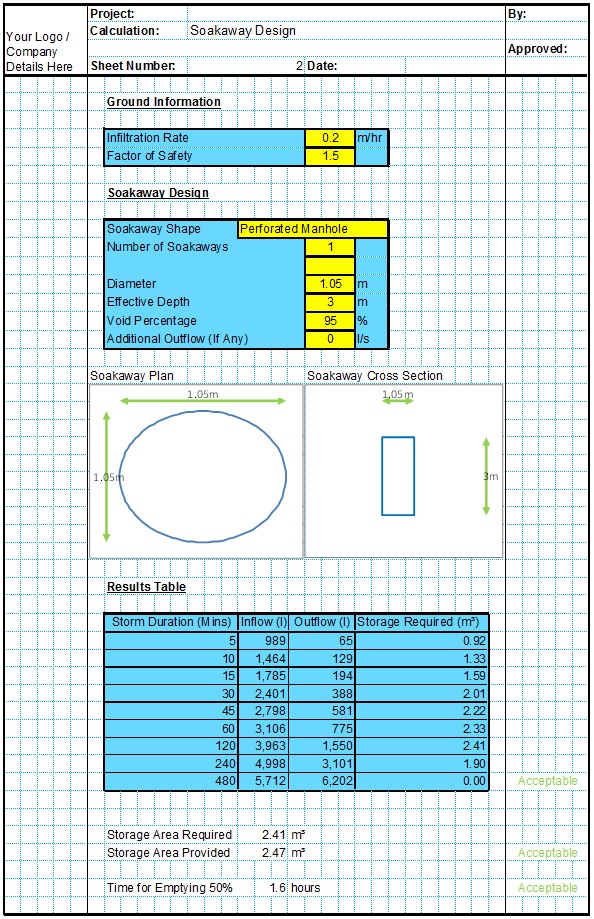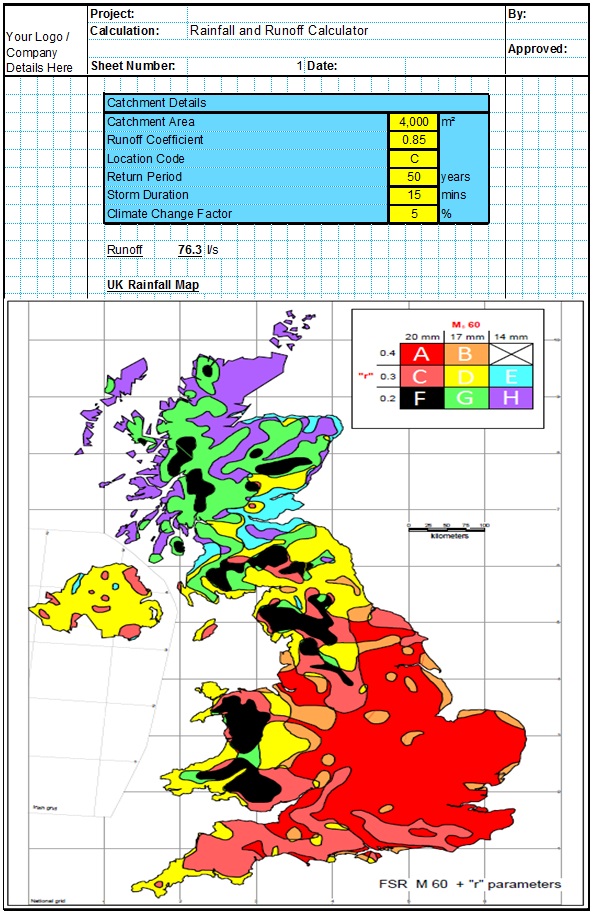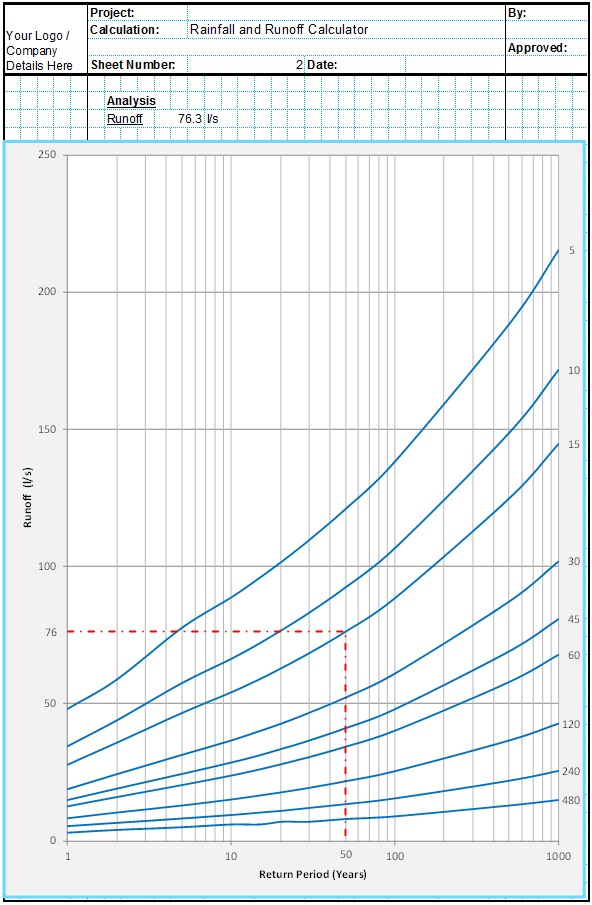BRE Digest 365 is one of the most regularly used design guidance reports issued by the Building Research Establishment. First published in 1991 as a replacement for the old BRE 151, BRE 365 has become the standard methodology for soakaway design in the UK. It includes design guidance for soakaway pits, trench soakaways and general advice for soakaway crates. It has been specified in a number of British Standards. BS 8582:2013 states that the hydraulic design of rainwater soakaways should be undertaken in accordance with either BRE 365 or CIRIA Report 156. It also includes the methodology for the percolation test used in surface water soakaway design.
BRE Digest 365 Method
The BRE Digest 365 method includes a number of specific design conditions and assumptions which must be considered, including the following;
The BRE 365 Method does not include a variable Factor of Safety. If using the CivilWeb Soakaway Design Spreadsheet the Factor of Safety value can be set at 1 to conform to the BRE 365 method. BRE 365 does however include a number of other conservative assumptions and simplifications which combine to increase the overall design factor of safety. The main assumptions include;
- Taking runoff coefficient as 100% for all impermeable areas. This assumption is always conservative as it does not allow for any surface ponding or wetting of the surface which will reduce the actual runoff even for perfectly impermeable surfaces such as sloped roofs. This can be very significant simplification and can add between 5% and 30% additional runoff depending on the type and condition of the surfacing. The CivilWeb Soakaway Design Spreadsheet allows the user to specify a lower runoff coefficient if required.
- Not allowing for the time of concentration. The time of concentration is the time that it takes for the design storm rainfall to runoff the surface, travel through the drainage system and reach the soakaway pit. This is not the same as the design storm duration and effectively increases the duration and lessens the intensity of the critical storm. The CivilWeb Soakaway Design Spreadsheet also does not allow for this effect as often is not significant for small soakaway systems with very short drainage runs.
- Not allowing for increases in infiltration rates at high storage levels. The head of water produced when the storage capacity of the soakaway is high is not allowed for. This increased head of water can increase infiltration rates significantly by forcing more water through the pores in the surrounding soils. If the designer chooses they can increase the infiltration rate to accommodate this effect, though caution should be used as infiltration rates under a head of water are very difficult to measure in practice.
The BRE 365 Method also assumes that there is no infiltration through the base of the soakaway. This is because it is assumed that the base of the soakaway is concrete or will become blocked with sediments. Depending on the soil conditions, methods of intercepting fines and runoff quality this may be conservative. The CivilWeb Soakaway Design Spreadsheet allows the user to include or exclude base infiltration with a specific base infiltration factor.
In addition to our design spreadsheet, we offer a Soakaway Design Service. We can offer bespoke soakaway designs completed in accordance with BRE 365, delivered in just 2 working days.
Related Spreadsheets from CivilWeb;
Soakaway Design Spreadsheet
This spreadsheet calculates the requirements for a soakaway system and assists the user to design a suitable system.
Attenuation Design Spreadsheet
This spreadsheet calculates the requirements for a attenuation system and assists the user to design a suitable system.
Runoff Calculator Spreadsheet
This spreadsheet calculates the design runoff flow for a site in accordance with the a number of different methods including the Wallingford Procedure.
Full Drainage Design Suite
Full drainage design suite (50% Discount) including 7 spreadsheets;
- Colebrook White Pipe Design
- Manning Pipe Design
- Manning Open Channel Design
- Linear Drainage Design
- Runoff Calculator
- Attenuation Design
- Soakaway Design



